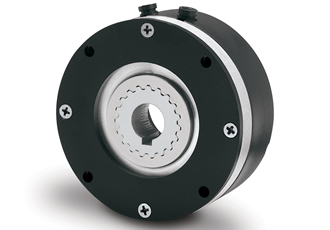ERS brakes used to build device for paralysed surgeon

Using Warner Electric's ERS brakes, engineering students from the University of Wisconsin-Madison have built a transportation device to enable a paralysed Orthopaedic surgeon to operate.
Dr Cuppels was paralysed from the waist down after an accidental fall from a three-story balcony. The severity of his injuries meant that he was unable to continue his work as an orthopaedic surgeon and his career was cut short; despite having perfect control of his upper body. When five engineering students from the University of Wisconsin-Madison Department of Biomedical Engineering heard about his situation they decided that they would commit their time and resources to designing a device that would enable Dr Cuppels to perform standing surgeries.
Devices that assist paraplegics to stand already exist, but none with the degree of autonomous, precise movement that would be required in the operating theatre. Dr Cuppels would have to be able to move as swiftly as an able bodied surgeon otherwise surgeries could be extended, which would result in patients being anaesthetised for longer periods of time. The drivetrain in particular had to be designed to offer accuracy and reliability combined with simple activation and low power consumption.
Mecanum wheels consisting of fifteen 45° passive rollers mounted around the diameter of each wheel were used to allow movement in any direction as well as a standing pivot in both directions. It would be controlled using a joystick which was connected to an enable button to prevent accidental movement during surgery. High quality brakes were also required which would offer good holding stability and emergency stop capabilities as well as minimal energy use while engaged during surgery.
When Gary Haasch, Product Engineering Manager for Warner Electric, heard about the project he was keen to help the students in any way that he could, and donated four Warner Electric ERS-42 spring-set, electrically released brakes to the project. The ERS series was ideal for the application as the electrically released design means that the brake does not use any power when engaged. Spring clamping force provides the holding torque, and this is overcome by magnetic force when electrical power is applied to the coil.
The brakes are pre-assembled and supplied ready to install. They feature a spline drive design which delivers high torque and minimal backlash when engaged for precise holding. Corrosion resistant material is used to prolong the life of the brake and non-asbestos friction material ensures that the discs provide consistent performance. Each brake was mounted to one of four stepper motors which power the wheels independently.
One of the students comments: "We were able to take on the project as part of our studies, but it quickly evolved beyond a simple academic undertaking. We realised that we weren't just producing a research tool, it was a project that was giving hope to a real person and had the potential to drastically improve his quality of life. Our initial consultation period showed us that it was possible to design a suitable device, but we would have to source high quality components to ensure the right levels of reliability and performance."
"When it came to specifying the brakes we realised that we needed to find components that would meet all our requirements while fitting into a small footprint. The device may have to be held in one position for hours during surgery, meaning that it was important the brakes wouldn't fail in the event of low power. We were aware that Warner Electric produces high quality brakes which are already specified on many mobility devices so approached the sales team to see if they could offer a suitable solution."
Gary Haasch comments: "As soon as I heard about the project I was keen to provide assistance. Not only was it offering support to a new generation of engineers, it was also helping to save the career of a talented surgeon who could then go on to save the lives of many other people. The ERS brakes supply the stability and reliability required by the application and benefit from a low profile design which helped to minimise the overall footprint of the device."
Similar articles
More from Warner Electric
- Warner Electric helps ramp up for the fight against COVID 11th March 2021
- Contactless sensor provides improved monitoring of elevator brakes 12th June 2019
- Brakes offer powerful braking performance in lightweight package 10th May 2017
- Sophisticated forklift braking technology developed 21st February 2017












Write a comment
No comments